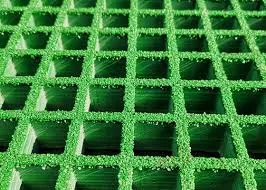
-
 Afrikaans
Afrikaans -
 Albanian
Albanian -
 Amharic
Amharic -
 Arabic
Arabic -
 Armenian
Armenian -
 Azerbaijani
Azerbaijani -
 Basque
Basque -
 Belarusian
Belarusian -
 Bengali
Bengali -
 Bosnian
Bosnian -
 Bulgarian
Bulgarian -
 Catalan
Catalan -
 Cebuano
Cebuano -
 China
China -
 China (Taiwan)
China (Taiwan) -
 Corsican
Corsican -
 Croatian
Croatian -
 Czech
Czech -
 Danish
Danish -
 Dutch
Dutch -
 English
English -
 Esperanto
Esperanto -
 Estonian
Estonian -
 Finnish
Finnish -
 French
French -
 Frisian
Frisian -
 Galician
Galician -
 Georgian
Georgian -
 German
German -
 Greek
Greek -
 Gujarati
Gujarati -
 Haitian Creole
Haitian Creole -
 hausa
hausa -
 hawaiian
hawaiian -
 Hebrew
Hebrew -
 Hindi
Hindi -
 Miao
Miao -
 Hungarian
Hungarian -
 Icelandic
Icelandic -
 igbo
igbo -
 Indonesian
Indonesian -
 irish
irish -
 Italian
Italian -
 Japanese
Japanese -
 Javanese
Javanese -
 Kannada
Kannada -
 kazakh
kazakh -
 Khmer
Khmer -
 Rwandese
Rwandese -
 Korean
Korean -
 Kurdish
Kurdish -
 Kyrgyz
Kyrgyz -
 Lao
Lao -
 Latin
Latin -
 Latvian
Latvian -
 Lithuanian
Lithuanian -
 Luxembourgish
Luxembourgish -
 Macedonian
Macedonian -
 Malgashi
Malgashi -
 Malay
Malay -
 Malayalam
Malayalam -
 Maltese
Maltese -
 Maori
Maori -
 Marathi
Marathi -
 Mongolian
Mongolian -
 Myanmar
Myanmar -
 Nepali
Nepali -
 Norwegian
Norwegian -
 Norwegian
Norwegian -
 Occitan
Occitan -
 Pashto
Pashto -
 Persian
Persian -
 Polish
Polish -
 Portuguese
Portuguese -
 Punjabi
Punjabi -
 Romanian
Romanian -
 Russian
Russian -
 Samoan
Samoan -
 Scottish Gaelic
Scottish Gaelic -
 Serbian
Serbian -
 Sesotho
Sesotho -
 Shona
Shona -
 Sindhi
Sindhi -
 Sinhala
Sinhala -
 Slovak
Slovak -
 Slovenian
Slovenian -
 Somali
Somali -
 Spanish
Spanish -
 Sundanese
Sundanese -
 Swahili
Swahili -
 Swedish
Swedish -
 Tagalog
Tagalog -
 Tajik
Tajik -
 Tamil
Tamil -
 Tatar
Tatar -
 Telugu
Telugu -
 Thai
Thai -
 Turkish
Turkish -
 Turkmen
Turkmen -
 Ukrainian
Ukrainian -
 Urdu
Urdu -
 Uighur
Uighur -
 Uzbek
Uzbek -
 Vietnamese
Vietnamese -
 Welsh
Welsh -
 Bantu
Bantu -
 Yiddish
Yiddish -
 Yoruba
Yoruba -
 Zulu
Zulu
frp walkway
Exploring FRP Walkways A Modern Solution for Safe and Durable Access
Fiber Reinforced Polymer (FRP) walkways have emerged as a revolutionary solution in the field of construction and architecture, combining durability, lightweight properties, and resistance to harsh environmental conditions. In recent years, the demand for innovative materials has grown, especially for applications where safety, longevity, and low maintenance are paramount. FRP walkways are designed to meet these demands, making them ideal for industrial facilities, commercial buildings, and outdoor recreational areas.
Exploring FRP Walkways A Modern Solution for Safe and Durable Access
Safety is another critical aspect of FRP walkways. These structures often come with anti-slip surfaces, which are essential in environments that may become wet or otherwise hazardous. This feature reduces the likelihood of slips and falls, significantly improving workplace safety. Moreover, the non-corrosive nature of FRP means that these walkways do not splinter or rust, reducing the risk of injuries caused by deteriorating surfaces.
frp walkway

In addition to safety and practicality, FRP walkways offer aesthetic benefits. They can be engineered in various colors and designs, allowing architects and designers to create visually appealing structures that blend seamlessly with their surroundings. This versatility makes FRP a popular choice for parks, pedestrian bridges, and waterfront areas, where aesthetic considerations are as important as functional ones.
Another crucial benefit of FRP walkways is their low maintenance requirements. Unlike traditional materials, which may require regular treatments or replacements due to environmental damage, FRP walkways are resistant to UV radiation, chemical exposure, and extreme weather. This results in significant cost savings over time, as facilities spend less on maintenance and repairs.
As we look toward a more sustainable future, the eco-friendliness of FRP materials becomes increasingly vital. Many FRP products are made from recyclable sources, which can reduce the overall environmental impact of construction projects. By choosing FRP walkways, industries and municipalities can contribute to sustainable development while enjoying the benefits of modern engineering.
In conclusion, FRP walkways represent a significant advancement in construction technology, offering robust, lightweight, and aesthetically appealing solutions for a variety of applications. With their many advantages—such as safety features, low maintenance, and environmental benefits—FRP walkways are poised to play a crucial role in shaping the infrastructure of the future. As industries continue to seek out innovative solutions, the adoption of FRP materials will likely increase, paving the way for safer and more efficient environments.
Latest news
-
Exploring the Benefits of Top Hammer Drifter Rods for Enhanced Drilling PerformanceNewsJun.10,2025
-
High-Precision Fiberglass Winding Machine for GRP/FRP Pipe Production – Reliable & Efficient SolutionsNewsJun.10,2025
-
FRP Pipes & Fittings for Shipbuilding - Corrosion-Resistant & LightweightNewsJun.09,2025
-
Premium FRP Flooring Solutions Durable & Slip-ResistantNewsJun.09,2025
-
Premium Fiberglass Rectangular Tanks Durable & Lightweight SolutionNewsJun.09,2025
-
Tapered Drill String Design Guide Durable Performance & UsesNewsJun.09,2025









